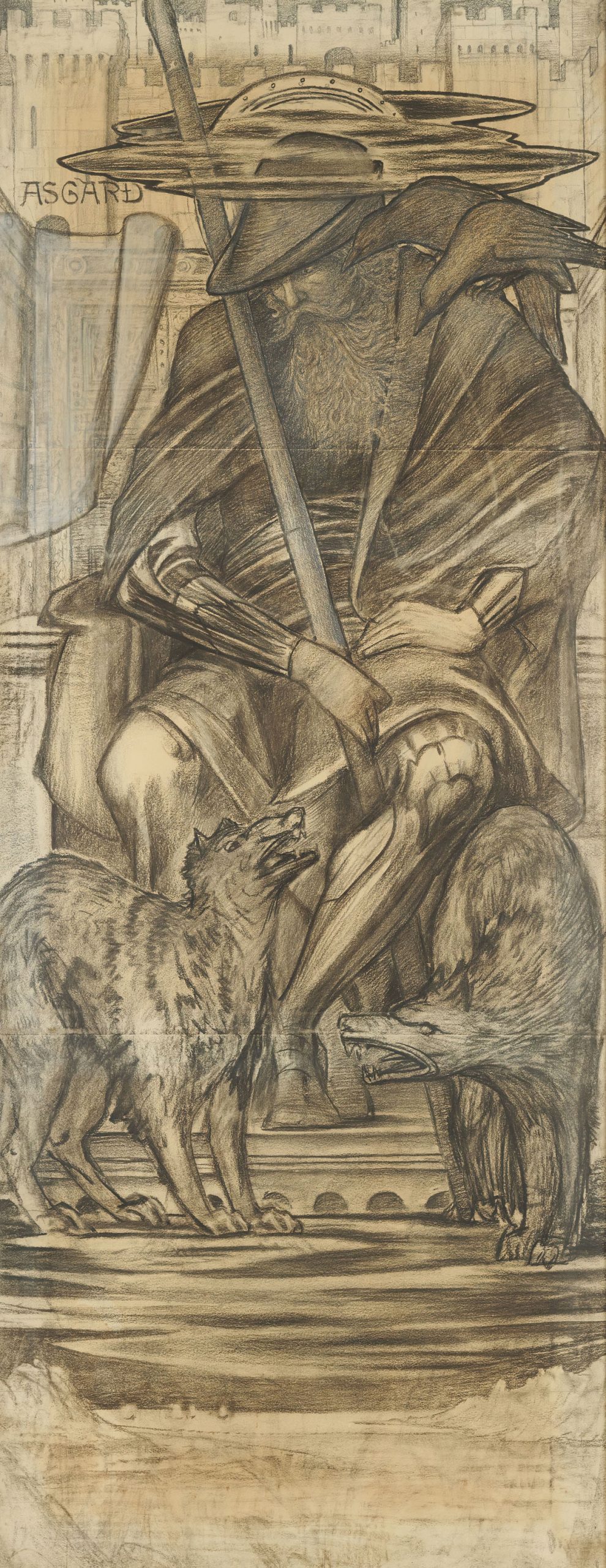Description
Odin by Sir Edward Coley Burne-Jones printed on a Sweatshirt
About the Sweatshirt
Regular fit
Standard length, the fabric easily gives into movement
Comfortable
The fabric and fit of this item are extra comfy
Tear-away tag
Easily removable tear-away tag that allows you to add a custom inside label
This Unisex Premium Sweatshirt has a classic crew neck, flattering unisex fit, and soft 100% cotton exterior.
- 100% cotton face
- 65% cotton, 35% polyester
- Charcoal Heather is 55% cotton, 45% polyester
- Fabric weight: 8.5 oz./yd.² (288.2 g/m²)
- Tightly knit 3-end fleece
- Side-seamed construction
- Self-fabric patch on the back
- Double-needle stitched rib collar, cuffs, and hem
- Tear-away label
Sir Edward Coley Burne-Jones (1833 – 1898)
Sir Edward Coley Burne-Jones was a British artist and designer associated with the phase of the Pre-Raphaelite movement, who worked with William Morris on decorative arts as a founding partner in Morris, Marshall, Faulkner & Co.
Burne-Jones was involved in the rejuvenation of the tradition of stained glass art in Britain; his works include windows in St. Philip’s Cathedral, Birmingham, St Martin in the Bull Ring, Birmingham, Holy Trinity Church, Sloane Square, Chelsea, St Peter and St Paul parish church in Cromer, St Martin’s Church in Brampton, Cumbria (the church designed by Philip Webb), St Michael’s Church, Brighton, Trinity Church in Frome, All Saints, Jesus Lane, Cambridge, St Edmund Hall and Christ Church, two colleges of the University of Oxford. His stained glass works also feature in St. Anne’s Church, Brown Edge, Staffordshire Moorlands and St. Edward the Confessor church at Cheddleton Staffordshire. Burne-Jones’s early paintings show the inspiration of Dante Gabriel Rossetti, but by the 1860s Burne-Jones was discovering his own artistic “voice”.
In 1877, he was persuaded to show eight oil paintings at the Grosvenor Gallery (a new rival to the Royal Academy). These included The Beguiling of Merlin. The timing was right and he was taken up as a herald and star of the new Aesthetic Movement. Burne-Jones worked in crafts; including designing ceramic tiles, jewellery, tapestries and mosaics.






Reviews
There are no reviews yet.